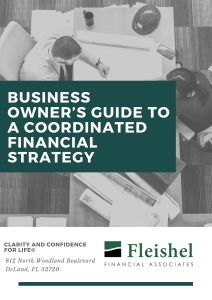It’s easy to think that a good business idea will naturally lead to success, but any entrepreneur will tell you, it’s not that easy. You need more than an idea. You need patience, dedication, and a strong worth ethic to take your idea and turn it into a reality.
Here are 7 steps you can take to get your idea off the ground.
1. Research the market.
When you’re trying to get your idea off the ground, one of the first things you need to do is market research.
No matter how good your idea is, if there isn’t a market for it, it’s not going anywhere. Take some time to dig deep and figure out if your idea is really as good as you think it is. Determine your audience and look at whether they are actually buying what you’re selling. What’s your competition doing? Are they struggling or have they really taken hold?
Be honest with yourself and analyze the strengths, weaknesses, risks, and opportunities that come along with your idea, so you can be prepared for the next phase.
2. Make sure you’re financially prepared.
Starting a business takes money, so make sure you have the funding you need to get started. Most small businesses do not have their financing needs met when they’re just starting, so it’s very important to sit down and develop a plan.
Whether you’re looking for investors, taking out a small business loan, or opening a line of credit, figure out a way to make it happen. Don’t forget to plan for expenses and future spending to ensure you can meet your financial obligations from month to month.
The more prepared you are when it comes to money, the easier it’s going to be to not only get your business going but also keep it going. A large part of new businesses fail because they can’t pay their bills or find new capital. Do everything you can to ensure this doesn’t happen to you.
3. Pinpoint your audience.
You should already have a good idea about who your audience is, and the next step is to narrow it down as much as possible. Figuring out exactly who your target audience is is the only way to determine who your ideal customer is, making it easier for you to market to them and meet their needs.
You can’t try to sell your product or service to everyone because everyone has different needs, budgets, and pain points. To determine your target audience, try conducting a market analysis, analyzing your competitors, conducting surveys and demographic information, and creating customer personas.
4. Come up with a business plan.
A business plan details every minute detail of your business, laying out everything while also answering big questions, like, who your target customer is and what problems you’re solving. It helps you understand more about your business, your market, your funding, and your future.
Here are some of the sections you should have in your business plan:
- Description of the company
- Management/Organization
- Descriptions of all products and services
- Marketing
- Funding sources
- Projected income and expenditures
If you’re unsure about how much to include in your business plan, the more details, the better. But the layout is important, too. Avoid long paragraphs of text and use as many headings, bullet points, charts, and graphs as possible to make the information more digestible.
5. Make sure it works.
Before you fully invest in your idea, make sure it works. You need to know that everything will run smoothly before you launch, or you’ll have a lot of angry customers, which doesn’t bode well for the future of your business.
Testing your business shows you what works, what doesn’t, and makes it very obvious where you need to make changes. Ask friends and family to be testers, conduct focus groups, or reach out to your target market and see what they think. Then, use the feedback they give you to make the necessary improvements before you launch to the general public.
6. Set attainable goals.
Your goals should be specific, realistic, and attainable to motivate you and help you stay on track. Give yourself reasonable time frames to keep things moving forward. When you meet those goals, set new ones so you continue to grow.
7. Get things going.
This step involves all of the practical things you need to do to get your business off the ground, but you should only focus on these things once you have completed everything mentioned above. Once your business plan is ready and you’ve worked out all the rough patches, it’s time to get started on the following:
- Registering the business
- Signing a lease
- Setting up advertising
- Getting an accounting program up and running
- Hiring employees
- Setting up a payroll system
Final Thoughts
Starting a business is intimidating, but the hard work is worth it in the end. Use this list as a guide to getting started, and take it one day at a time.
Any opinions are those of Thomas Fleishel and not necessarily those of Raymond James.
Any information is not a complete summary or statement of all available data necessary for making an investment decision and does not constitute a recommendation.





0 Comments